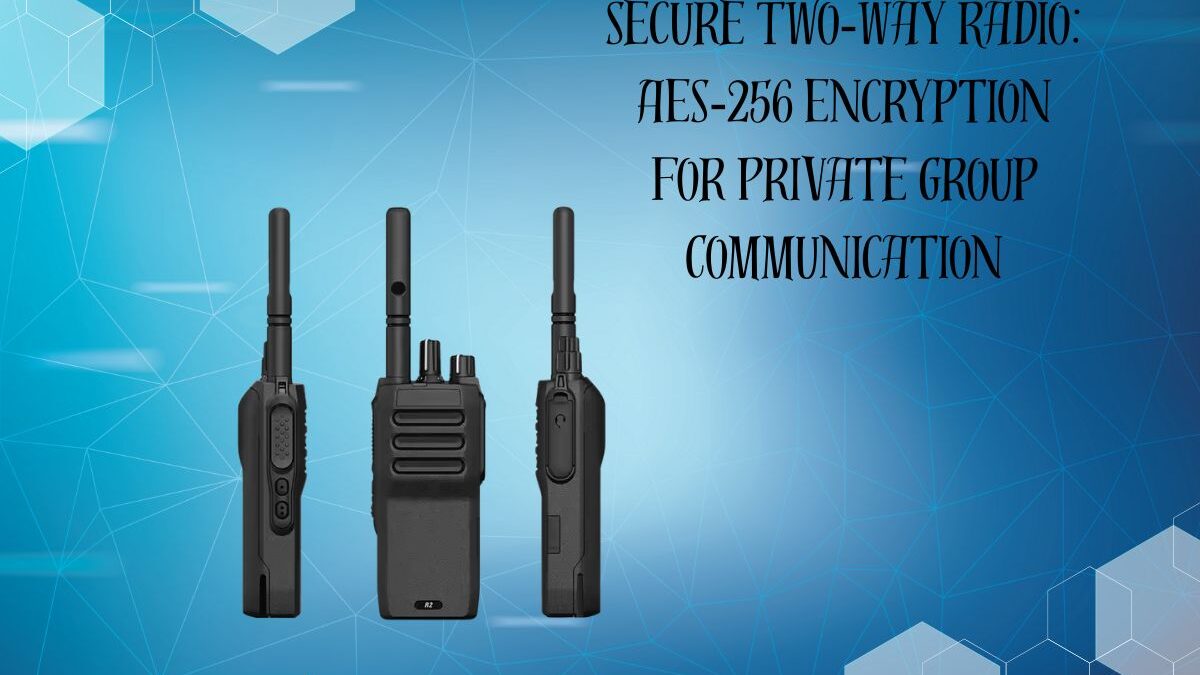Because not every message is meant for everyone.
Imagine coordinating a security team during a VIP event. Or managing sensitive logistics at a corporate facility. Maybe you’re a school administrator directing emergency protocol across campus.
Now imagine someone—anyone—listening in.
If your communication tool doesn’t offer strong encryption, that’s not just possible—it’s likely. In a world where information is currency, unsecured comms are an open invitation.
This is where AES-256 encrypted two-way radio comes in. Because sometimes, privacy isn’t optional. It’s the whole point.
Table of Contents
What Is AES-256, and Why Should You Care?
Let’s cut the jargon: AES stands for Advanced Encryption Standard. The “256” refers to the encryption key length—an absurdly long, virtually uncrackable string of code.
To put it in perspective:
- AES-128 would take billions of years to brute-force.
- AES-256? That’s another level entirely. Think military-grade. Think top-secret clearance.
It’s the same encryption used by government agencies, cybersecurity firms, and financial institutions. Now it’s available in modern two-way radios—giving your team secure, real-time voice communication that no one else can intercept.
Not bad for a device that fits in your palm.
Who Needs Encrypted Two-Way Radios?
Anyone who says, “We need to keep this internal.”
Here’s where AES-256 makes the biggest difference:
- Security teams at concerts, stadiums, or corporate campuses
- Law enforcement coordinating covert or tactical operations
- Schools and universities conducting emergency drills or lockdown procedures
- Construction companies handling proprietary blueprints or sensitive projects
- Transportation/logistics firms tracking high-value cargo
- Executives managing internal communications in volatile business environments
In short? If you’ve got information worth protecting, you’ve got a reason to upgrade to an encrypted radio.
Privacy Without Complexity
You’d think military-grade encryption would be clunky to use. It’s not.
Modern encrypted two-way radios—especially those using push-to-talk over cellular (PoC)—come preconfigured with secure protocols baked in. No manual key loading. No programming headaches. Just press, talk, and rest easy knowing it’s locked down.
You get all the benefits of standard two-way radio features:
- Instant communication
- Group broadcasting
- Long battery life
- Nationwide reach (with PoC models)
…but with a secure digital layer protecting every word.
Why Cell Phones Aren’t Enough
Sure, phone calls and messaging apps promise encryption. But even the best ones are only as secure as the user—and the network.
- Phones get hacked.
- Apps get spoofed.
- Notifications pop up in plain view.
- And let’s be honest: employees don’t always follow IT policy.
With encrypted two-way radios, there’s no app to install. No log-in. No messages stored in the cloud. Just direct, device-to-device (or device-to-network) encrypted voice.
You control the hardware. You control the message. That’s real security.
Legal Compliance and Peace of Mind
In certain industries—education, healthcare, logistics—privacy isn’t just a preference. It’s a regulation.
Encrypted communication can help you stay in compliance with:
- FERPA (education data privacy)
- HIPAA (health information protection)
- C-TPAT (supply chain security)
- Internal corporate privacy policies
And beyond compliance, there’s the peace of knowing sensitive moments—like a campus alert, an incident report, or a rerouted delivery—are staying where they belong: within your team.
Encrypted. Empowered. Essential.
Communication is power. But only when it’s secure.
A two-way radio with AES-256 encryption gives you the best of both worlds: the speed and simplicity of push-to-talk, with the protection of elite digital security.
In a time when information is vulnerable and oversight is everywhere, this level of privacy isn’t just smart—it’s necessary.
Because what you say should stay yours.

